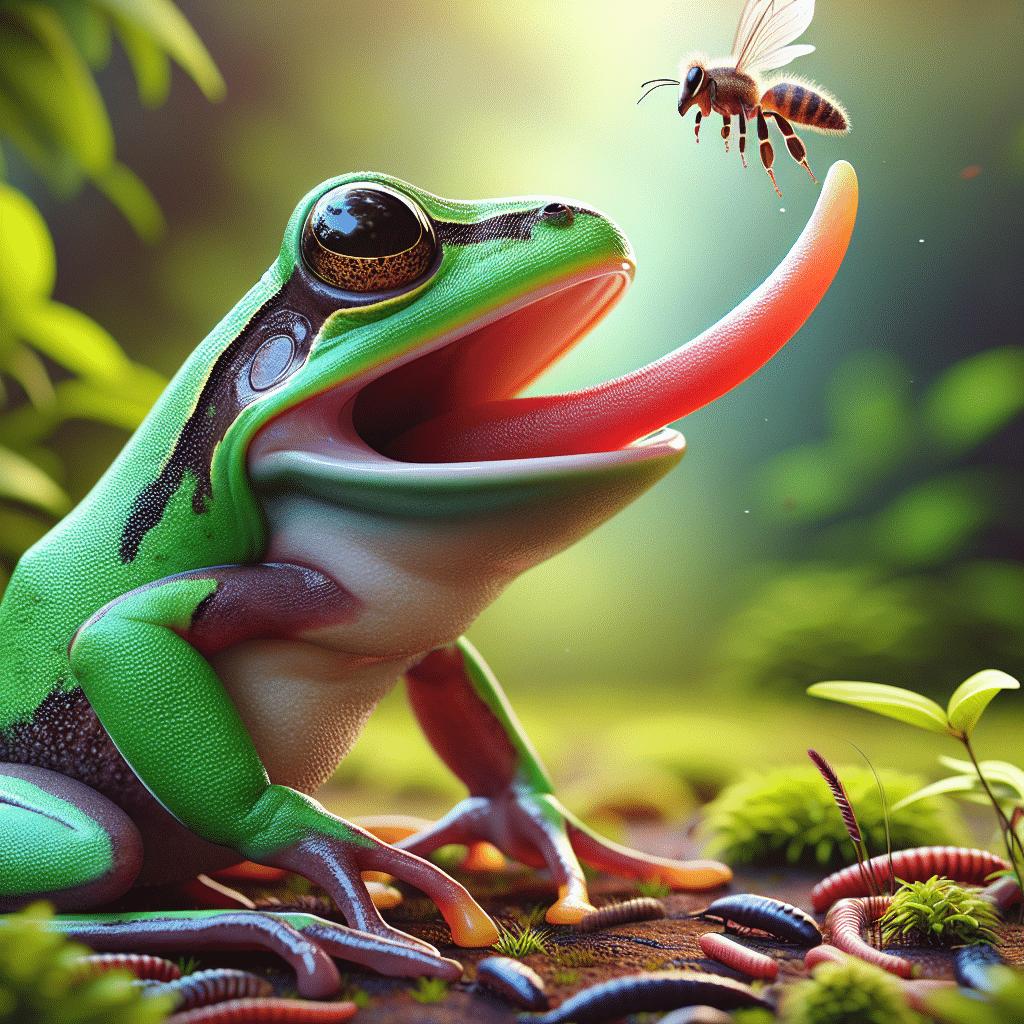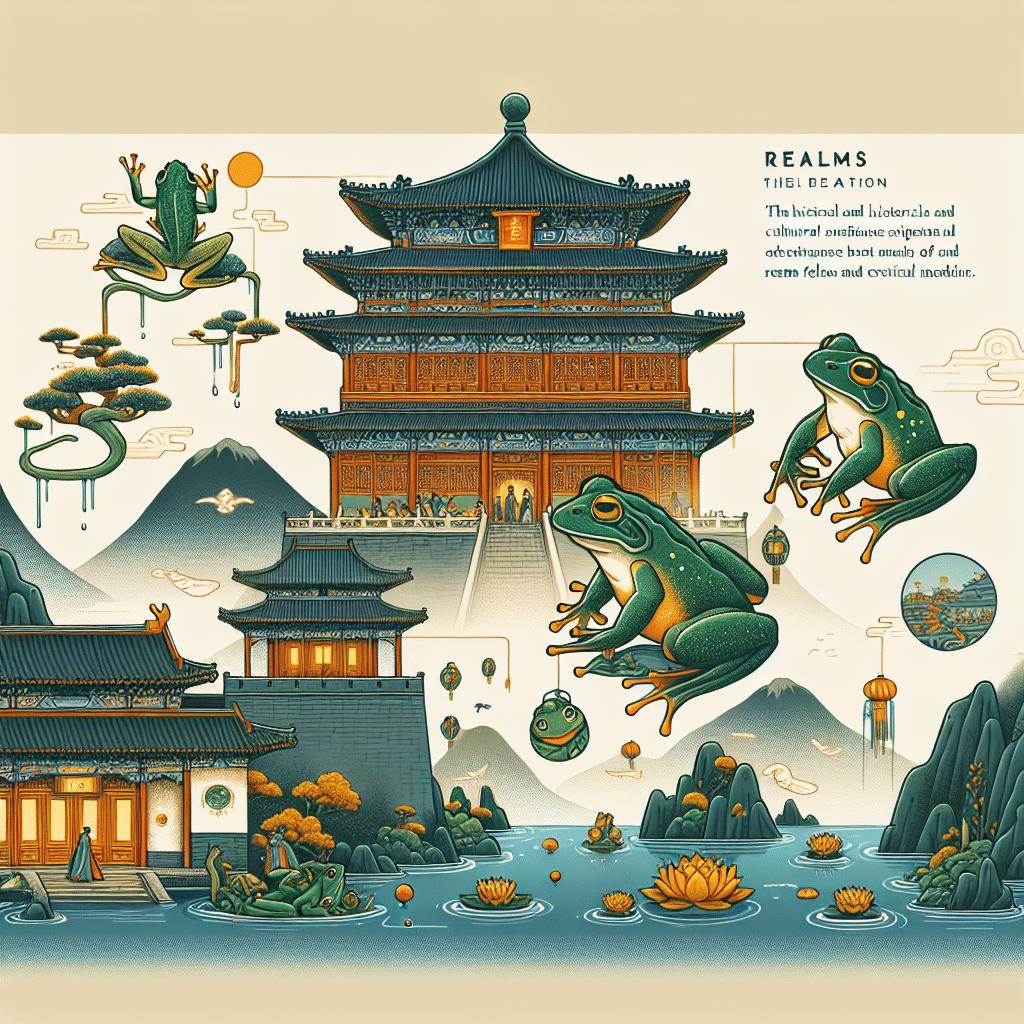Imagine you’re lounging in your backyard when a chorus of croaks captures your attention. Those little hoppers are more than just background music—they’re part of your garden’s ecosystem. And you can’t help but wonder, what do these backyard frogs feast on? From insects that skim the pond’s surface to wriggly worms that tunnel through the earth, your garden is a buffet for these amphibians. With a diet as diverse as their calls, frogs play a crucial role in controlling pests and maintaining the delicate balance of your outdoor haven.

Understanding Backyard Frogs
When you look out into your backyard, you might spot a few of these little jumpers around, especially near water or during the wet season. Frogs are quite fascinating creatures, each with its unique characteristics and behaviors. Let’s hop into their world and understand more about them.
Characteristics of Common Backyard Frogs
Backyard frogs come in various sizes and colors, depending on their species. You might see the common green frog with its slick, vibrant skin, or perhaps you’ve noticed the bumpy texture of a toad, which is also a type of frog. These creatures are known for their powerful legs, which allow them to leap great distances, and their bulging eyes, giving them a wide field of vision. Their skin is also remarkable, as it absorbs water and helps in respiration.
Habitat Preferences for Backyard Frogs
Your backyard can be a haven for frogs if it has what they’re looking for. They generally prefer moist areas with plenty of shelter. You’ll find them near ponds, marshes, or wet grassy areas. Some might even choose to hang out in your garden if it’s moist and has a good supply of insects to munch on. Many frogs are also nocturnal, so you’ll hear their chorus more than you see them.
The Role of Frogs in the Ecosystem
Frogs play a crucial role in the balance of the ecosystem. They are both predators and prey, fitting perfectly in the middle of the food chain. By feasting on insects, they control the pest populations and, in turn, are a vital food source for birds, snakes, and even some mammals. Their presence is a good indicator of environmental health, as they are sensitive to changes in their ecosystem, making them vital for biodiversity.
Diet Composition of Backyard Frogs
Frogs are not picky eaters, but they do have certain preferences when it comes to their diet. The composition of a frog’s diet can give us insights into their behavior and the health of the environment they inhabit.
General Overview of Frog Diets
Frogs are primarily carnivorous, though their diet can range from insects to small animals. Whatever they can overpower and fit into their mouth is fair game. This includes a variety of bugs, spiders, and even small vertebrates like other frogs.
Adaptability in Diet Based on Environment
Depending on where they live, frogs adapt to consume what’s available. In lush backyards, this might mean a smorgasbord of beetles, mosquitoes, and other common insects. In more aquatic environments, their diet might consist of more water-dwelling prey.
Seasonal Variations in Frog Diet
As the seasons change, so does the frog’s diet. They’ll eat less during colder months and may even go into a state of hibernation where they don’t eat at all. When it warms up again, they’ll come out of hiding and feast on the plentiful insects of the spring and summer.

Insects and Arthropods
Insects and arthropods make up a large part of what backyard frogs eat. This section will help you understand the predator-prey relationship between frogs and these critters.
Common Insects Consumed by Frogs
The common insects frogs eat include flies, mosquitoes, moths, and beetles. These make for easy-to-catch, protein-rich snacks. You’ll often find frogs in areas where these insects are abundant, like near lights at night or around gardens and ponds.
Importance of Spiders and Other Arthropods
Spiders, centipedes, and even scorpions are on the menu for some backyard frogs. These arthropods are essential for frogs not only because they are a food source but also because they help to keep the population of these creatures in check.
How Frogs Catch Their Prey
Frogs have various methods of catching prey, but their long, sticky tongues are their most iconic tool. They wait for the perfect moment, then lash out with incredible speed to snatch up an unsuspecting insect. Some larger frogs will also use their strong jaws to grab and overpower larger prey.
Worms and Gastropods
Besides insects, frogs often consume other soft-bodied invertebrates such as worms and gastropods, which are crucial for their diet.
Earthworms as a Dietary Staple
Many frogs consider earthworms a staple in their diet, as they are rich in protein and commonly found in moist soil. After a rainy day, don’t be surprised to see frogs hopping around, hunting for these worms.
Snails and Slugs in the Frog’s Diet
Frogs also consume snails and slugs, both of which can be found in abundance in gardens. These gastropods are easily digested and provide key nutrients.
Nutritional Benefits of Worms and Gastropods for Frogs
Worms and gastropods are not only easy prey due to their slow movement but also high in nutritional value. This makes them an important part of a frog’s diet, contributing to their growth and overall health.

Aquatic Prey
When you have a pond or stream in your backyard, you may see frogs indulging in a bit of underwater hunting.
Tadpoles in the Diet of Cannibalistic Species
It might be a bit shocking, but some frog species will eat their own kind, including tadpoles, especially if food is scarce. This cannibalistic trait is a survival mechanism to reduce competition and control population size.
Small Fish and Their Role
For those frogs that live in or near water, small fish can also become a part of their diet. These fish are usually young or small enough for the frog to manage.
Aquatic Insects as a Food Source
Aquatic insects such as mosquito larvae and water beetles are also consumed by frogs. These insects, often found near the surface of the water, offer an easy catch for hungry frogs.
Amphibians and Reptiles
Frogs can sometimes be found eating other small amphibians and even reptiles.
Smaller Frogs and Their Predation
Frogs do not discriminate much when it comes to their diet – if a smaller frog is present and the predator frog is big enough, it may become a meal.
Cannibalism Amongst Frog Species
Cannibalism is a natural behavior in many frog species, particularly when resources are low or in high-density populations. By consuming their kind, they can sustain themselves and keep the balance in their environment.
Inclusion of Reptiles in Diet
Frogs have been known to eat small reptiles such as lizards and even snakes if they can catch them. These are usually small specimens that the frog can safely overpower.
Small Mammals and Birds
On rare occasions, particularly with larger frog species, small mammals and birds may be part of their diet.
Feeding on Rodents: Which Frogs Do It?
Some of the largest frog species, like the African bullfrog, can eat small rodents. These meals are more sporadic as it takes a significant amount of energy to catch these faster-moving animals.
Avian Prey: An Uncommon Choice
Birds are not common prey for frogs due to their mobility, but occasionally, nestlings or weak birds might be consumed if the opportunity presents itself.
Constraints in Preying on Larger Animals
Because frogs are limited by their mouth size and the constraint of needing to swallow their food whole, larger animals are rarely on the menu.
Plant Materials and Fruits
While frogs are generally carnivores, some species will occasionally eat plant material.
Omnivorous Frogs: A Rare Occurrence
In the frog world, being an omnivore is not the norm, but a few species do eat algae or other plant matter, often when animal prey is scarce.
The Role of Fruits in Some Frog Diets
Some tree-dwelling frogs may eat fruits, and this behavior also helps in seed dispersal, which is another key role frogs play in the ecosystem.
The Ingestion of Plant Matter
Typically, the ingestion of plant matter is accidental for most frogs. However, the nutrients from these plants are not wasted, as they can provide additional nourishment.
Feeding Behavior and Techniques
So, how do these creatures manage to survive with such a varied and often challenging diet? Let’s find out.
The Sit-and-Wait Hunting Strategy
Many frogs are ambush predators, meaning they will sit patiently and wait for prey to come into range. This strategy conserves energy and allows them to explode into action when the moment is just right.
Active Hunting Methods
Some frogs will actively hunt for food, especially those that are ground dwellers and need to search through leaf litter for insects, worms, and other delicacies.
Unique Adaptations for Capturing Prey
Aside from their sticky tongues, frogs have other adaptations like camouflaged skin and an acute sense of hearing, all geared towards making them efficient predators.
Conservation and Management of Backyard Frog Populations
Ensuring that frogs thrive in your backyard entails creating a supportive environment and being mindful of broader ecological impacts.
Creating a Frog-Friendly Environment
You can create a frog-friendly environment by providing clean water sources, shelter, and reducing pesticide use. This will not only help the frogs but also contribute to a healthier backyard ecosystem.
Protecting Frog Habitats from Pollution
Frogs have permeable skin, which means they are highly susceptible to pollutants. Keeping chemicals out of your yard as much as possible will protect these sensitive creatures.
Promoting Biodiversity to Sustain Frog Diets
Maintaining a diverse range of plants and animals in your backyard supports the various prey populations that frogs depend on, ensuring they have a balanced diet and thriving habitat.



